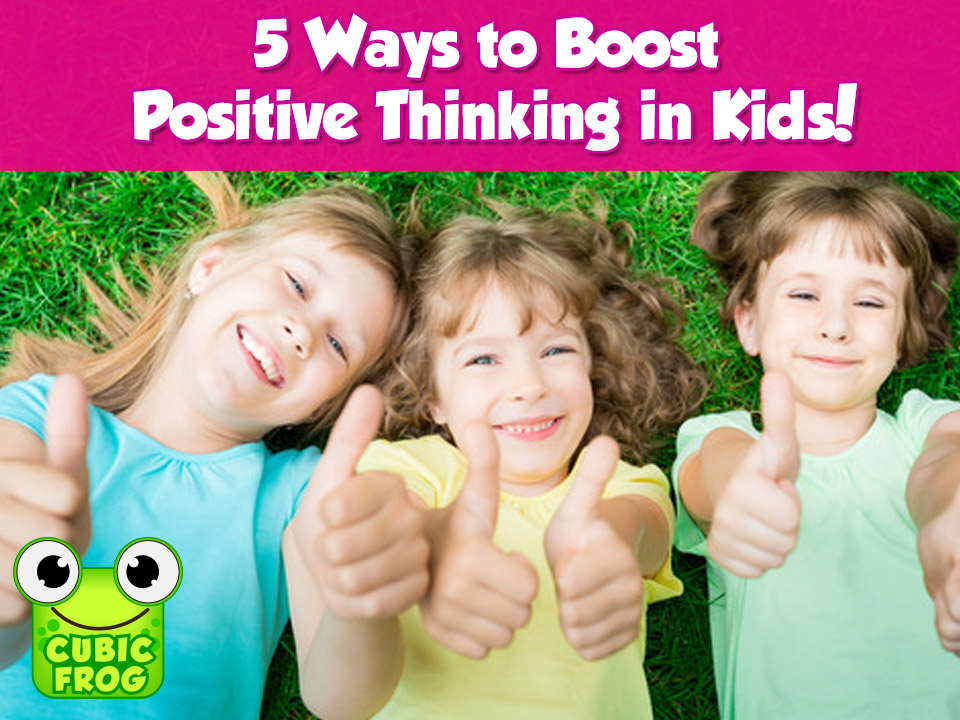Before you accuse Cubic Frog® of going all ‘kumbaya’ let’s talk about some very real research on positive and negative thinking.
Negative thinking isn’t all negative; in fact, it can be useful in very stressful situations. The body is programmed during times of danger to become extremely focused on finding the easiest, quickest, most effective solution. Think about fight or flight; when there’s a lion chasing you, your body is pumping adrenaline, firing neurons all towards survival. For sure you won’t be thinking about what you had for lunch yesterday, for example.
Now the problem with this type of thinking always is that it makes your body able to think of one option and in that one option alone. This type of negative or stress thinking is binary in that it limits creativity.
In an experiment by Barbara Fredrickson of the University of North Carolina, participants were shown pictures that inspired joy and contentment, while another group was shown blank photos and the third group pictures that inspire fear. After, subjects were given an everyday problem and a piece of paper to write down different solutions. The group that came up with the most solutions was that which had been shown the positive thinking pictures.
Positive thinking has the ability to not only inspire a broader mentality when it comes to thinking of possibilities in life but the effect is cumulative. It seems the more one thinks positively, the broader their viewpoint can become and this type of open, creative thinking becomes easier and easier. And, studies show that both positive and negative thinking is contagious from person to person.
For children, positive thinking in play and joy are particularly essential in developing problem-solving and social skills that are useful and valuable in navigating everyday life. Positive thinking is like opening all the metaphorical windows to children’s thinking abilities.
So how do we inspire positive thinking in kids? We’re glad you asked!
1. Meditation
There are lots of resources for how to begin meditating with children (like this one!). Begin with something simple and short, building from this foundation. Perhaps closing your eyes and breathing together or repeating one word over and over again, or even simple reading them a story while they close their eyes and try and envision the story; trying different meditation patterns to see which works best for your child.
2. Writing
Try making a family tradition where each day you write down one (or more!) positive experience you’ve had that day. Keep a gratefulness journal or perhaps paint a family grateful blackboard. And if your children are having a particularly hard time, have them write or draw a list of the things that make them feel the happiest (it can be an object, person, or memory). This simple act is enough to get those positive brain chemicals working their magic!
3. Play
Be it mobile games, board games, sports, music, or whatever type of play gives them joy, make sure kids have designated time to play every single day. Physical movement is also important in getting those happy chemicals flowing!
4. Complain / Gain Rule
Everyone’s gotta complain sometimes, we definitely understand! But try challenging your children when they complain to identify a way in which to gain from this complaint. Sometimes, kids simply need to vent their frustrations or emotions. But often times during a situation they are complaining about, they can turn it around and talk about what they have to gain from the struggle as well. And putting kids in the driver’s seat to turn their negative into a positive is empowering for little ones.
5. Box of Pride
Spend the day creating and decorating a medium to large sized box. Inside the box store notes, graded papers, awards, certificates and other things that make your children feel proud of themselves. Whenever they have a hard moment and need to be reminded of just how special they are, have them go and reach into their box and pull out one of their pieces of pride.






